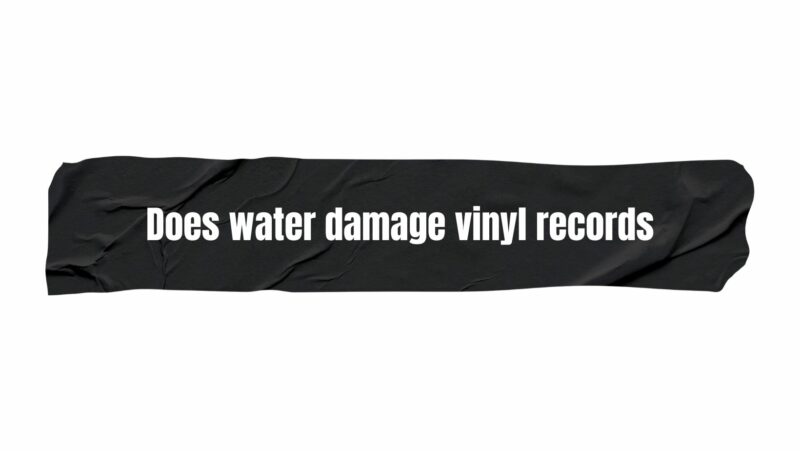Vinyl records have long been revered as vessels of musical history and nostalgia, evoking a unique listening experience cherished by audiophiles and collectors. The tactile pleasure of handling a vinyl record, coupled with the warm analog sound it produces, forms an enduring connection between the past and present. Amid the reverence for these musical relics, a pressing question arises: Does water damage vinyl records? This article embarks on a thorough exploration of the relationship between water and vinyl records, shedding light on the potential risks, causes of damage, and strategies for preservation.
Understanding Vinyl Records: To comprehend the potential impact of water on vinyl records, it’s crucial to understand the composition and structure of these audio artifacts. Vinyl records are crafted from polyvinyl chloride (PVC), a pliable material susceptible to environmental factors such as temperature changes, humidity, and liquid exposure. The grooves etched onto the record’s surface hold the intricate audio information, making them both the heart of the record and its most vulnerable aspect.
Water’s Threat to Vinyl Records: Water, while essential for life, can present a formidable threat to the delicate structure of vinyl records. The direct contact of water with records can lead to a range of detrimental consequences, including warping, mold growth, and degradation of the vinyl material. Each of these potential forms of damage has the capacity to impair not only the aesthetic value but also the playability and sound quality of the records.
Warping: A Common Consequence: One of the most common and visually noticeable outcomes of water exposure is warping. Vinyl records are sensitive to temperature and moisture changes, and when water penetrates the grooves and is absorbed unevenly, it can lead to the record taking on a distorted and non-flat shape. Warping has a direct impact on the stylus’ ability to track the grooves properly, causing playback issues and compromised audio quality.
Mold Growth: A Hidden Peril: The presence of water also introduces the risk of mold growth, which is particularly concerning due to its potential for hidden and long-term damage. Mold thrives in damp and humid environments, and when water penetrates the grooves, it creates a conducive breeding ground for mold. This can result in unsightly discoloration, an unpleasant odor, and even structural damage to the record.
Degradation of Vinyl Material: Water’s chemical interaction with PVC can lead to the degradation of the vinyl material itself. The introduction of water can accelerate the breakdown of the PVC, causing it to become brittle and prone to cracking over time. The grooves, which are integral to sound production, become susceptible to irreversible damage, rendering the record unplayable.
The Vulnerability of Grooves: The grooves on a vinyl record are its essence, containing the very essence of the music. When water comes into contact with these grooves, it disrupts their precise geometry and alignment. This disruption translates into audible surface noise, skipping, and an overall diminished sound quality.
Prevention and Preservation: The imperative of preventing water damage to vinyl records cannot be overstated. Proper storage in a dry, controlled environment is essential to maintaining the records’ integrity. If accidental water exposure occurs, prompt action is paramount. Gently blotting the affected area with an absorbent, lint-free cloth and allowing the record to air-dry can help mitigate potential harm.
Conclusion: In the delicate dance between preserving vinyl records’ integrity and the desire to experience their timeless melodies, the question of whether water damages vinyl records stands as a crucial consideration. Water, while essential for life, presents substantial risks to the delicate structure of vinyl records. Understanding the potential consequences, practicing cautious handling, and implementing effective preventive measures can help ensure that these musical artifacts continue to evoke nostalgia and enrich our appreciation of music for generations to come.


